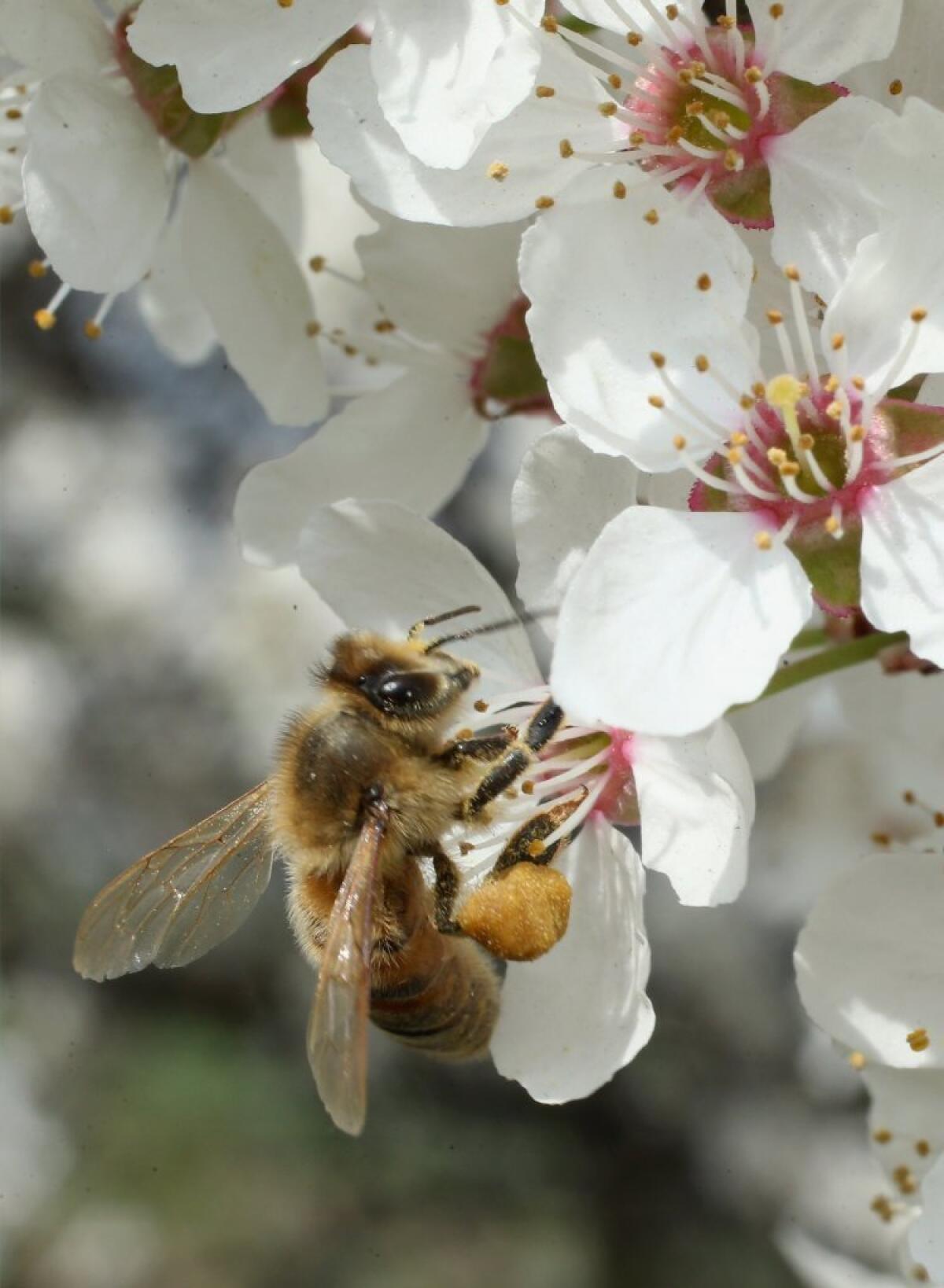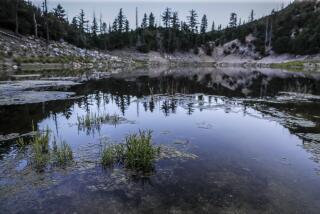Honey may hold the sticky solution to bee colony collapse

Honeybees that live off the same sweetener found in soft drinks could be more vulnerable to the microbial enemies and pesticides believed to be linked to catastrophic collapse of honeybee colonies worldwide, a new study suggests.
Researchers identified a compound found in the wall of plant pollen that appears to activate the genes that help metabolize toxins, including pesticides, according to the study published Monday in the Proceedings of the National Academies of Science.
Although pollen winds up in the honey produced by Apis mellifera, these bees used to pollinate crops spend more time sipping on the same sugar substitute that is ubiquitous in processed foods – high-fructose corn syrup. The honey substitute is an important way for the industry, which contributes about $14 billion to the U.S. economy, to make ends meet.
In California, the $3-billion almond industry spends $239 million annually to rent more than 1 million bee hives, and that cost is escalating as the commercialized honeybee population succumbs to the colony collapse disorder.
“If you’re feeding them high-fructose corn syrup, then pathogens may be more dangerous and pesticides can be more toxic,” said May Berenbaum, an entomologist at the University of Illinois-Urbana/Champaign, the lead author of the study.
Berenbaum was going down a well-trodden path for entomologists – trying to find something in the insect’s natural food source that turns on detoxification genes. Such triggers among insects are commonly linked to food, because plants defend themselves to survive. So, insects develop entire suites of detoxification genes whose signaling path starts with food.
But Berenbaum and her fellow researchers instead found several substances that helped turn on those genes did not come directly from the bees’ food supply, nectar. They identified p-coumaric acid as a key compound that revs up the bee’s defense system.
“It was not really what we expected because p-coumaric acid is not abundant in nectar,” she said. P-coumaric acid is found in the walls of pollen that bees pick up and that gets mixed in with honey. The other compounds that Berenbaum linked with the bee detox cycle are found in the sap of poplars, which bees use to make a glue for their hives.
In retrospect, the bee’s detox activation makes sense, Berenbaum said: The bee’s diet comes from an incredibly diverse array of plants that produce a tiny amount of nectar that doesn’t contain any toxic defenses. Nectar is designed for one thing: to lure insects or animals to drink it and carry away pollen on their bodies, ensuring the survival of the plant. So it’s not surprising that bees developed vastly fewer detoxification genes.
Instead, it’s the pollen and the tree sap that cue the bee to activate its toxic defenses. Left to natural foraging and hive building, the bee manages its own defenses.
But commercialized beekeeping survives by altering those bee behaviors, most notably by scraping off the honey for sale and using much cheaper high-fructose corn syrup to keep the bees fed.
Research in the 1970s had suggested that there were no health consequences or increased hazards associated with feeding bees on high-fructose corn syrup. But that was before beekeepers began putting mite-killing chemicals in hives, and before an entire class of agricultural pesticide was introduced.
“The chemical milieu has changed since the 1970s,” Berenbaum said. “A friend of mine likes to say that honeybees are flying dust-mops. They fly through many types of environments, and many agricultural environments are laced with pesticides.”
A study in 2010 found evidence of 121 pesticides in honeybee hives, including compounds used to fight off bee mites and a fungicide widely used in agriculture.
Pesticides are among the factors believed to be linked to colony collapse disorder, which has wiped out entire colonies of commercial bees since about 2006. Scientists have identified several factors in the collapse, including parasites, microbial pathogens, pesticides, nutrition and beekeeping practices.
“People would love to have the one solution, but the problems is it really does seem like it’s a combination of factors,” Berenbaum said. But a compromised immune system, she added, could complicate all of the identified factors.
Eyal Maori, a University of Cambridge virologist who has studied ways to combat Israeli acute paralysis virus, which has been strongly linked to colony collapse disorder, said Berenbaum’s findings “could explain how insufficient natural diet could lead to colony deterioration due to increased effect of pesticides and pathogens.”
Maori, who was not involved in the study, said more research will be needed before anyone can recommend adding p-coumaric acid or other “neutraceuticals” to a bee’s diet. Berenbaum agreed. “There’s a big gap between a scientific finding and practical application,” she said.
Ian Lipkin, an epidemiologist at Columbia University who has studied the microbes associated with colony collapse, said Berenbaum’s paper may lead to “simple measures” that could decrease the impact of colony collapse.
“Apparently there is truth (at least for bees) in the adage, ‘You are what you eat,’ ” he said.
[Corrected, 11:54 a.m. April 30: A previous post identified p-coumaric acid as an enzyme. It is an organic acid.]







